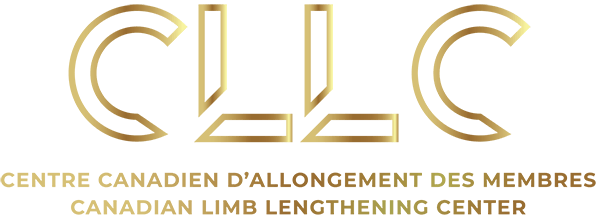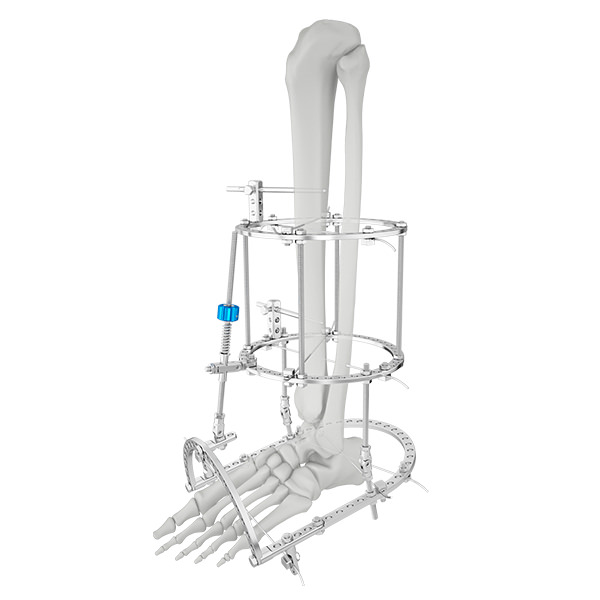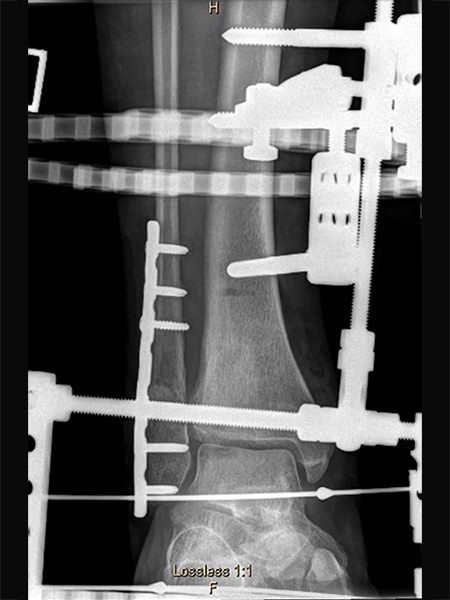Ankle articulated distraction is used as a treatment for ankle arthritis. It is based on the theory that osteoarthritic cartilage in the ankle has the ability to heal. Ankle distraction involves the use of external fixation to mechanically unload the ankle joint and prevent contact between the tibia and the talus bones. Arthrodiasthesis involves joint separation as a means to induce healing of the area and optimize the body’s regenerative capacity. For younger patients, this technique may be an alternative to ankle arthrodesis or total ankle arthroplasty.
Indications / Candidacy
Articulated ankle distraction (arthrodiasthesis) is a technique used to treat ankle osteoarthritis, especially in younger patients who experience pain and discomfort because of this condition. Ankle osteoarthritis is generally a progressive condition that may be the result of a high-energy tibial plafond fractures, bimalleolar ankle fractures or recurrent ankle instability.
The ideal candidate for ankle distraction arthroplasty is a motivated patient who seeks an alternative to ankle fusion or total ankle arthroplasty.
Good Candidates for Ankle articulated distraction (arthrodiasthesis) may have:
- Ankle osteoarthritis (wearing away of the articular cartilage)
- Pain, decreased range of motion and swelling
- Hardening of the surrounding bone
- Damage to the cartilage cells
- Young age with end-stage osteoarthritis, and are being considered for arthrodesis
- Failure to respond to more conservative treatment measures



Treated Conditions
The Canadian Limb Lengthening Center offers a team of experienced surgeons, nurses and physiotherapists that make patients feel supported throughout their entire treatment process. Our ability to treat complex orthopedic conditions with a holistic approach gives our patients the best possible outcomes. We pride ourselves in providing highly specialized, expert care. To learn more about ankle arthritis follow the links below:
Surgical Technique
- Using an external fixator, the joint is gently re-aligned via the process of mechanical unloading and transferring of weight to the external fixator (metal frame).
- Ankle articulated distraction is a minimally invasive surgery that relies on the use of external fixation to pull the joint surfaces apart. An external fixator is a scaffolding assembled around the outside of the leg.
- Using pins and wires the frame is attached to the leg while the patient is under anesthesia. The pins are attached to the bones of the ankle and connected to the external frame using wires.
- The distraction of the joint is achieved in the operating room by pulling the rings apart and then locking them into place. The frame is built so that the ankle has unrestricted ankle mobility during the distraction, which helps the cartilage heal.
- Patients wear the external fixator for approximately 10-12 weeks.
Results
Ankle articulated distraction (arthrodiasthesis) will mechanically unload the ankle to relieve pain, preserve ROM, and potentially delay or even partially reverse the effects of arthritis. Throughout the treatment process regeneration of cartilage increases joint resiliency, stability and orientation while reducing the likelihood of having to undergo more extensive ankle surgeries. If the patient does not achieve satisfactory relief, ankle articulated distraction preserves the bone and joint so that subsequent procedures can still be performed without increased complications.

Potential Complications
As with any surgical procedure, ankle articulated distraction to treat osteoarthritis can have difficulties and complications. In most cases, our team of specialists can address these concerns without compromising the end results or outcome. Complications and side effects may include:
- Pin infections
- Abnormal gait due to minimized ankle movement
- Restricted motion
AM I A CANDIDATE?
Are you experiencing an orthopedic condition and would like to improve your physical capabilities?
Or you simply would like to achieve your long-lasting dream of improving your height?
Let us help you achieve your optimal health and wellness in a professional setting.
Let’s open up a discussion to help you achieve your goals.




Highly specialized expert care at CLLC
At the Canadian Limb Lengthening Centre we offer complex deformity correction and limb lengthening surgeries performed by experienced surgeons with the most up to date technologies. When it comes to your care, and treatment of deformity and limb length discrepancy, our surgeons have extensive training and experience.







